The acclaimed book City of Oranges: An Intimate History of Arabs and Jews in Jaffa has been published in a new edition with a major new afterword. Fathom spoke to its author Adam LeBor about his profoundly human take on the Israeli-Palestinian conflict, seen through the eyes of six families, three Arab and three Jewish, from the millennia-old port of Jaffa. Now part of Tel Aviv, Jaffa was once known as the ‘Bride of Palestine,’ one of the truly cosmopolitan cities of the Mediterranean. LeBor was by turns candid – ’Writing the book in 2006 was a great learning curve for me because I had very little knowledge of the complexity and sophistication of Arab society in Israel before 1948’ – and defiantly hopeful: ‘despite everything, Jaffa is still a place where Jews and Arabs live together. Peace is built from the bottom up, one person to another; it cannot be imposed from the top.’ Download a PDF version here.
Samuel Nurding: Can you say something about your background, the major influences on your intellectual development, and how these have helped to form the characteristic concerns of your work?
Adam LeBor: I grew up in London and went to a Jewish state-run primary school and then onto the Jewish Free School. I received a quite unbalanced education. When I was ten I could read three Hebrew scripts but when I left JFS at the age of eighteen I didn’t know anything about Shakespeare or English literature. It was a very Jewish-focused education, although I learnt to think analytically. When I arrived at Leeds University I felt like I had entered a foreign country. I hardly knew any non-Jewish people when I was young. It’s probably different now but in the late 1970s, the Jewish community was more insular.
One major influence on my work was studying history at JFS. Another was my six-month stay, during my gap year, at a very left-wing kibbutz, called Ramat Hashofet. I studied Hebrew for half a day and worked for the other. I worked in a wood factory for much of the time, making ammunition boxes – not exactly what I had dreamt of doing – and many Arabs from the nearby villages came to the factory to work. I began to see some of the contradictions of ‘socialist Zionism’. For example, the Kibbutz said they didn’t have waged labour, but had Arab labourers come in daily to earn a wage despite not joining the Kibbutz (not that they particularly wanted to). The tension between the socialism of the Kibbutz and the specific demands of Zionism were clear to me and that’s when I started to become more interested in the Arabs of Israel than the Arabs of the West Bank. It seemed obvious to me early on that the answer to the West Bank problem was a two-state solution with trading across open borders, within the constraints of security needs. The late Shimon Peres had a vision of a confederation of Israel, Palestine and Jordan, like the Benelux, and this made a lot of sense to me.
I was however, much more interested in the question of what it means to be Arab in a Jewish state. The contradiction fascinated me because Arab citizens of Israel have the greatest freedoms of any minority in the region, yet they are not regarded as full – or real – Israeli citizens by many of their fellow Israelis.
SN: Tell us what ‘City of Oranges’ is about and why you wrote it?
AL: Israel has always been a big part of my life and for a long time, I had wanted to write a book about it. I did not, however want to write another political analysis or narrative history about Israel/Palestine. I wanted to write something different, to focus on the people. I got the idea for City of Oranges from writing a biography of Slobodan Milosevic in which I tried to explain the rise and fall of Yugoslavia through the story of his life. I found mixing Milosevic’s personal story with the backdrop of the history and geopolitics of his country an effective and satisfying approach. TAdopting that same framework and apply it to the Israel/Palestine issue, I decided to structure the book around a place, rather than a single person. I chose Jaffa, which, before 1948, was the cultural capital of Palestine and a very cosmopolitan city with many writers, cinemas, and a lively cafe life. When I arrived there I didn’t know the city apart from the tourist area – the Old City, and I naively thought I would find many families there to talk to. I soon realised that nobody really ‘lives’ there apart from a few rich Israelis – most of its original inhabitants had left in 1948. Luckily I eventually found six families to centre the book on; three Jewish and three Arab, each of whom either lived in or were connected to other parts of the city, and one which has settled in the Old City. I tried to capture the panoramic sweep of history in the book. I thought of it as something like Exodus meets War and Peace.
SN: How did you find the six families that form the basis of the book?
AL: There aren’t many families of 1948 left in Jaffa, everyone knows who they are, so it was quite easy to find that handful of people. Crucially, once I found them, they were keen to tell their stories. The Arab families included the Andraus family of Arab-Christian heritage, the late Fakhri Geday, the pharmacist on Yefet Street and the Hammami dynasty. Amin Andraus, the patriarch of the Andraus family, became the de facto leader of Jaffa’s Arabs after 1948. The Hammamis were pillars of the now vanished Palestinian middle class, as were the Gedays. Fakhri Geday’s story is very interesting; he was living in Beirut in 1948 but was allowed to return back to Jaffa under the family reunification programme. He was a very strong Palestinian nationalist, who hated Egyptian President Anwar Sadat with a vengeance for making peace with Israel. He also refused to have any level of coexistence with Israel, believing it would eventually fall. He would give me a big smile and say, ‘Don’t you think, my dear?’ It was fascinating to talk to someone like that. And of course the other well-known dynasty was the Hammamis, who were a pillar of the Palestinian middle class before 1948. Some of the Hammamis who ended up living in Jerusalem, after the family was exiled to Lebanon, Jordan and Iraq, spent a day in Jaffa with me. We went to their old home, which since been demolished, and it was a very powerful experience.
On the Jewish side I was more spoilt for choice, although it was trickier to find a family that had lived in Jaffa pre-1948. I settled on the Chelouche family, who had arrived in Palestine from north Africa in the 19th century and who had financed the building of Tel Aviv. The others were the Aharoni family and Frank Meisler. Yoram Aharoni, the head of the family, had seen a lot of action before 1948, fighting against the British. I made a big mistake when I first met him, asking how long he’d been in the Stern Gang, and he responded: ‘We were not a gang – long pause, hard stare – we were a group.’ You could see the steel inside him, still. Frank Meisler brought the Holocaust narrative to the book. He came to UK on the Kinder Transport in 1939 and later his parents were killed in Auschwitz. He had very interesting stories about Israel in the 1950s, when he arrived, describing it as a ‘very rough and ready place’.
SN: I want to ask you a question we asked the author Daniel Monterescu, who you reference in your book and who has also written about Jaffa. Cities such as Jaffa, Ramle, Lydda, Haifa and Acre are exceptional places in Israel today. What are the most important characteristics of these so-called ‘mixed cities’ and what might they tell us about Israel’s future?
AL: The most important characteristic is that these are places where Jews and Arabs interact on a day-to-day basis. They shop in the same shops, they eat in each other’s restaurants, they work in the same businesses and are seen by the same doctor. Coexistence continues no matter what. When you hear about Israel/Palestine in the news, it’s a story of continual conflict, but most Jews and Arabs in mixed cities are not having continual conflict on a day-to-day basis. They are simply getting on with their lives. I always remember a conversation with a teacher in one of Jaffa’s Arab-language schools, who told me that every encounter between Jewish and Arab Israelis changes both of them, as they personally experience the reality of the ‘other’.
Jaffa: ‘the bride of Palestine’
SN: Jaffa appears at the start of the book in 1920 as a tranquil place where Muslims, Christians and Jews lived together, did business and attended one another’s weddings, but, you write, ‘in a sense, partition had already begun.’ Can you say why?
AL: There was a realisation on both sides that sooner rather than later you had to choose what side you were on. During the collapse of Yugoslavia in the early 1990s, people wanted to continue to be Yugoslavs but they couldn’t be.Because of the pressures of war they had to choose between being Serbs, Croats, Bosnian Muslims, Macedonians etc. A similar experience was occurring in Palestine from the 1920s, getting stronger in the 1930s with the Arab revolt and exploding in 1948. The Arabs were aware what was coming with the large influx of Jewish immigration and the emergence of the Jewish Agency – a Jewish state in the making. Unfortunately for the Arab population, their leadership was fractured, ineffective and failed to see the reality around them.
1948
SN: The seminal event in the book is 1948. What impact did 1948 have on Jaffa?
AL: It was a catastrophe for the Arab families of Jaffa. It meant the end of Jaffa as an Arab city. Up to 100,000 people lived there at the time, mostly Arabs. The collapse started before 1948, actually. By the winter of 1947 many people had left Jaffa for Beirut or Cairo, believing the Jews would soon be defeated and that they would be able to return. But as the fighting grew more serious, and following the declaration of the State of Israel, more shelling ensued and more people left. The mayor told people to leave.
As we sit here, we can’t judge a family who, with mortars raining down on them, decide to leave their homes. I understand that. There was hand-to-hand fighting for control of Manshiyyeh, the strip of land between Tel Aviv and Jaffa, but not for most of the city. When Menachem Begin’s militia and the Haganah moved in, everyone had gone. One of the most interesting bits of the book was when I was speaking to the daughters of Amin Andraus, and she told me that her father had tried to persuade people to stay. But they went anyway. In some places across Palestine people left before the fighting arrived. In others there was clear evidence of people being driven out. In Jaffa during the 1948 war, there was a lot of shelling. After months of low intensity fighting, and a massive car bomb in Clock Tower Square in early 1948, that was enough; tens of thousands of Arabs left.
SN: You quote an Israeli artist who said to David Grossman: ‘If you give them a toehold here you are immediately acknowledging thereby that some sort of injustice took place…their having a hold here would undermine our right to the place and our presence.’ How did the newly established state treat Jaffa’s Arabs who stayed in or close to the town?
AL: There were only four to five thousand people left, many of them itinerant labourers who had got caught up in the fighting. They were rounded up and imprisoned for a while, and then they were eventually allowed to go back home. Arabs in Israel lived under military rule until 1966 and they were very strictly monitored. Life wasn’t easy. What happened to the families who stayed, like Amin Andraus, was that the state allowed them to keep their homes, but all their other lands and holdings were taken away from them.
SN: You write that by the 1960s Jaffa had fallen into decay. However, its fortunes were about to turn thanks to a surprising individual: the former Jerusalem Mayor Teddy Kollek. How did Kollek revive Jaffa?
AL: Between 1948 and the mid-1960s, Jaffa’s houses were either left to rot or pulled down. Jaffa was seen as a dump compared to the newly built Tel Aviv. When immigrants from the Balkans arrived to Israel they were sent to Manshiyyeh, the coastal strip between Tel Aviv and Jaffa, until it was demolished. During this time there was a mania in Israel to knock things down and rebuild – it’s part of Zionism’s obsession with modernity; get rid of the old and bring in the new. It was Kollek who convinced the authorities not to demolish Jaffa – or what was left after large parts were destroyed by the British during revolts in the Mandate period – and he turned it into an artist colony. Old Jaffa is quite kitschy and touristy but it’s definitely better than a pile of rubble or another steel and glass skyscraper. If you go to Jaffa now, further down south toward Bat Yam, there is a beautiful landscaped park with lawns and pathways. That park is built on top of all the rubble of the houses demolished after 1948.
1967
SN: Another major event that impacted Jaffa is the 1967 War. What impact did 1967 have on Jaffa and its residents?
AL: For the Arabs, 1967 was the shock realisation that their dream of the Arab world rescuing them from Israel was not going to happen. Some families tried to accommodate the state. Many Arab families who had fled Jaffa after 1948 for the West Bank or Jordan could freely come back to Jaffa and they could see their houses, see Israel and what had been built up.For those who did, it was unsettling and difficult. As a refugee you dream of going home and when the Arabs went back after 1967 they found their homes with someone else in them.
Nationality and identity
SN: You write: ‘The relationship between Jaffa and Tel Aviv might be a metaphor for that between the Palestinians and Israel.’ What did you mean by this?
AL: Tel Aviv started out as a suburb of Jaffa. The first Jewish immigrants in the late 19th and early 20th century lived in Jaffa or its surrounds because that’s where most of them landed. It was from there that they realised they needed to build a new town to house the growing number of Jewish immigrants, so they founded Tel Aviv’s first suburb, Neve Tsedek, which was in essence a suburb of Jaffa. Tel Aviv started out as a satellite of Jaffa. Today, Jaffa is a suburb of Tel Aviv, and that is the story of the conflict.
SN: One theme throughout the book is the architecture in Jaffa as a simile for how the Israeli-Palestinian conflict has developed in the last 100 years. Can you talk about that aspect of the book?
AL: Architecture is a living expression of political and historical ideas. Tel Aviv, at least in its historic heart, is a very clear political statement: a modern city, influenced by the Bauhaus. That approach is in contrast to the older Ottoman-style architecture of domed-roof houses, narrow alleys and courtyards and also to the cramped conditions of the shtetls, the villages in eastern Europe where many Jewish communities used to live. There were however also modern buildings in Jaffa, as modernist influences spread between the cities.
Israel: 70 and counting
SN: How do you assess the relationship of Jews and Arabs in Jaffa today?
AL: It’s still as complex as ever. And now, rising house prices mean that the Arab families in Jaffa cannot afford to buy properties for their children, so they are moving to Ramle or Lod. Many families are getting substantial backdated bills for extensions and alterations that the authorities claim were carried out without permission. This gentrification process is not strictly a part of the conflict between Jews and Arabs, but it’s seen through this prism. The more Israelis that move to Jaffa, the more house prices rise, but at the same time there is a lot of social deprivation, crime and drug dealing, and locals cannot afford to live there, which is causing a lot of resentment. Tel Aviv hipsters and liberals want to live with the Arabs, but their influx is driving out the very thing that brought them to Jaffa.
Several things have happened since 2006. Bridges have been built between Arabs in Jaffa and Mizrachi Jews, originally from Arab countries, who live in the more deprived parts of Tel Aviv. Both groups are slowly beginning to realise that despite the conflict their interests are much the same when it comes to issues such as housing, education, employment and infrastructure.
In 2011, as the ‘occupy’ movement proliferated around the world, the Jews and Arabs of Jaffa made an agreement to march together and not to wave Israeli and Palestinians flags. They wouldprotest about social, not national issues. That people can see past nationalism and focus on what unites them, rather than divides them is a great sign of hope for the future of Jaffa
SN: I was struck by Robyn Andraus, the granddaughter of Amin Andraus, one of Jaffa’s great Patriarchs, who said ‘My dad’s generation say they are Palestinians who live in Israel. I say I am an Israeli.’ She went on: ‘My generation were born after 1948 when being Palestinian was not an option. My Dad’s generation and I grew up in two different countries. Israel is now a big blend of people and there are many foreigners here, from all over the world. I don’t think anyone should have the right of return, Jew or Palestinians. They should be allowed to immigrate if they benefit the country. Israel should become a normal society, and that is not such a big idea.’ What is your own vision for Israel?
AL: I agree with much of that. There is a very interesting book called The Hebrew Republic by Bernard Avishai and he argues that the work of Zionism and the establishment of a Jewish state in Israel, is done. Avishai stipulates that the time has come for Israel to evolve into a modern country, or rather what he calls: a secular-Hebrew republic. Obviously Jewish heritage and culture will remain a large part of the state, but you won’t get an Israeli passport if you land at Ben-Gurion just because your grandmother is Jewish, or if you’ve lived there for a year or two. Instead, the focus should be on ‘Israeliness’ and the inclusive notion of the word ‘Israeli’ that includes the Arab minority. Israel will always be a heavily Judeo-centric state, but Israelis should now focus not on what it means to be Jewish, but what it means to be Israeli.
SN: I think your book best shows how the infamous phrase, ‘A land without a people for a people without a land’ was not a true reflection of reality. What one message do you hope the reader will take from your book?
AL: The book was a great learning curve for me because I had very little knowledge of the complexity and sophistication of Arab society in Israel before 1948. The one message I hope readers take away from the book is not just about what was lost – Jaffa as the cultural capital of Palestine with writers, cinemas, and a very culturally lively, cosmopolitan environment – but also what can be. Even now, despite everything, Jaffa is still a place where Jews and Arabs live together. Peace is built from the bottom up, one person to another; it cannot be imposed from the top.
SN: For the new edition of City of Oranges you wrote a new afterword. What seemed to you to be the most important things you had to say in it?
AL: I returned to Jaffa in the summer of 2017 to see as many of the families that I could and to update the book. Some of those I interviewed, like the Andraus sisters and Frank Meisler have become friends. Sadly, some of those I interviewed for the first edition had since passed away, including Yoram Aharoni and Fakhri Geday while Frank Meisler passed away in March 2018. The main thing I noticed was the growing gentrification – even hipsterisation of Jaffa. The Flea Market, for example, has less dark and gloomy shops selling piles of duty antiques and memorabilia and far more – too many, perhaps – hipster cafes, bars and eateries. Yet at the same time it’s important to realise, and acknowledge, that cities are living organisms. They change and evolve. Jaffa is going through a new phase in its long history. The good part of this is that there is also a renewed emphasis on conservation and reconstruction, especially around Clock Tower Square, the historic heart of the area of the city dating to the Ottoman-era. The most important point though, is that despite the national conflict and the arguments over history, identity and gentrification, Jaffa is still a city where Jews, Muslims and Christians live, work, eat and drink together. And that, especially in today’s Middle East, is something to safeguard and to celebrate.
City of Oranges: An Intimate History of Arabs and Jews in Jaffa is published by Head of Zeus.

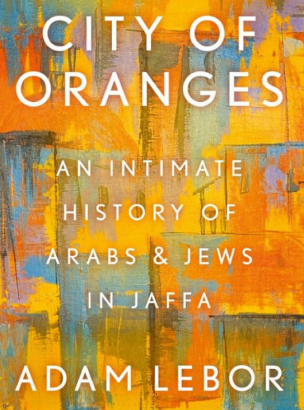
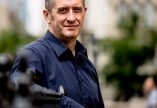
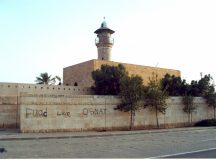
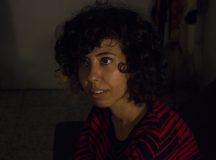
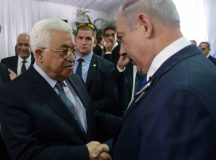































LeBor’s book is marred by a number of errors and omissions. There was an ancient Jaffa/Jope/Yafo, but the Mamluk rulers around 1300 wrecked all –or almost all– the coastal cities of the Levant from northern Syria down to Gaza, including Acre/Akko and Jaffa [Haifa was not a city but a Jewish village before the Crusades]. So there is no historical continuity between the ancient and the modern Jaffa, which began to be rebuilt in the Ottoman period before 1800. It is true that Jews and Arabs lived together in Jaffa in the late Ottoman period but the Jews, even more than local Christians, were subject to the oppressive dhimmi laws. Nor was there any “Palestinian” people until the 1960s, as a result of British psywar efforts led by Christopher Mayhew, among others. However, a local Christian did publish a newspaper called al-Filastin [= Palestine] starting in 1908 but in traditional Arab and Muslim geography there was No Palestine or Filastin. The country was seen as an indistinct part of Bilad ash-Sham [= Levant or Greater Syria]. And the population did not call itself “Palestinian” but rather identified according to religion, even if Arabic was the predominant language.
When Jews moved from Jaffa to the new Tel Aviv in 1908, one reason was to get away from oppressive Muslim domination.
Now, LeBor is anachronistic by using the term “Palestinian” for the Arabs and local Christians before the 1960s since they did not see themselves that way until then, especially not before the founding of the PLO in 1964.
Arab expert witnesses testifying before the Anglo-American Committee of Inquiry in 1946 declared that there was no “Palestine” in history, it was all Syria.
LeBor strangely omits the bloody pogroms against Jews in Jaffa in 1920-21, one of which was led by a mandatory police officer who was a local Christian. He also omits the story of Jaffa in the Israeli War of Independence when Arab snipers in the mosque minarets of Manshiyyah and northern Jaffa began shooting at people on the streets of Tel Aviv. Thousands of Jews fled south Tel Aviv early in the war for that reason. The sniping went on until the Etsel/Irgun counter-attacked in April 1948 but the sniping had begun in December 1947.